It looks like you're using an Ad Blocker.
Please white-list or disable AboveTopSecret.com in your ad-blocking tool.
Thank you.
Some features of ATS will be disabled while you continue to use an ad-blocker.
share:
We have two new large groups 1338 and 1339 at the eastern limb.
Sunspot group 1339 is really very big one and active too, hope she going to peaceful stage ..
This CME from M 4.3 solar flare is not Earth directed, groups will be Earth facing around 5 days ..
If this group stay active we will have from ~ 8 Nov to 12 stronger geomagnetic storms ..
This stronger X-ray measurement of solar flares in last 3 days are mostly from active 1339, two M class from 31 Oct are from same sunspot group ..
www.swpc.noaa.gov...
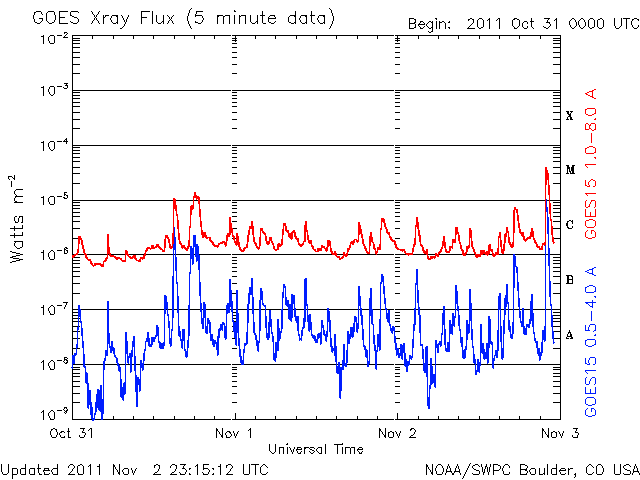
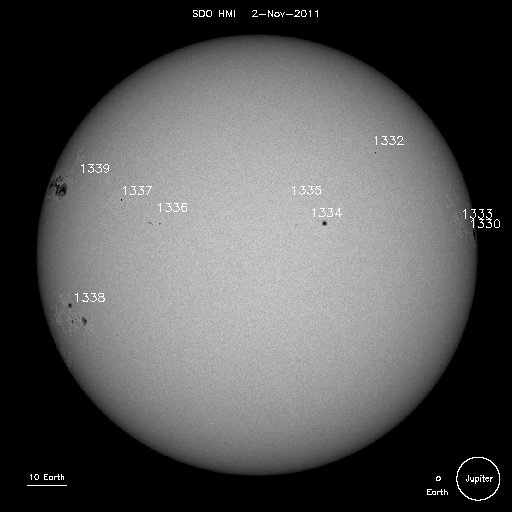
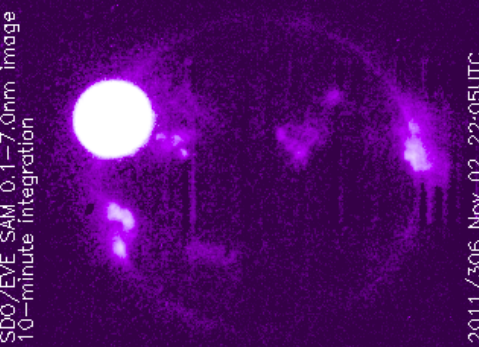
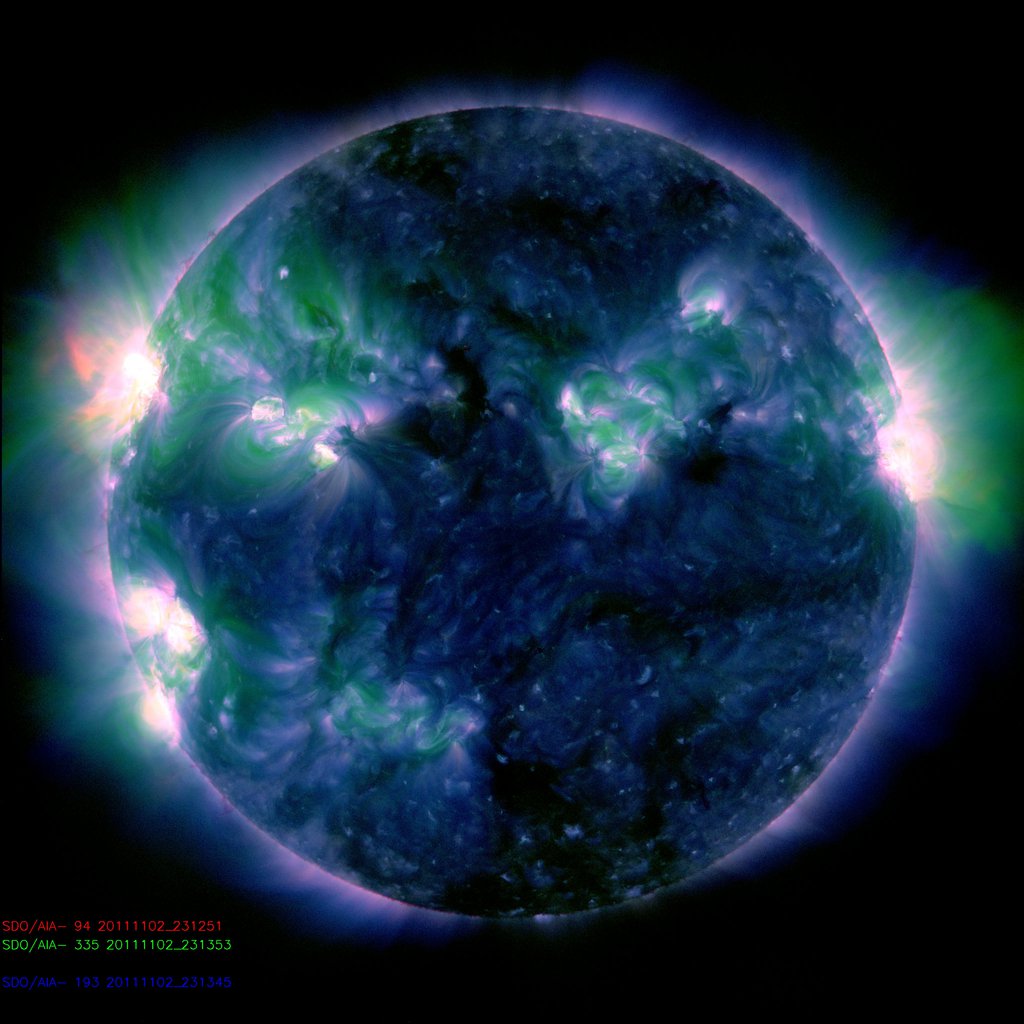
spaceweather.com...
NOAA Forecasts
FLARE 24 hr 24-48 hr
CLASS M 50 % 50 %
CLASS X 05 % 05 %
Sunspot group 1339 is really very big one and active too, hope she going to peaceful stage ..
This CME from M 4.3 solar flare is not Earth directed, groups will be Earth facing around 5 days ..
If this group stay active we will have from ~ 8 Nov to 12 stronger geomagnetic storms ..
This stronger X-ray measurement of solar flares in last 3 days are mostly from active 1339, two M class from 31 Oct are from same sunspot group ..
www.swpc.noaa.gov...




A large sunspot group is rotating over the sun's northeastern limb, possibly signaling an uptick in solar activity. Amateur astronomer Pavol Rapavy of Slovakia took this picture just a few hours ago:
Measuring some 40,000 km wide and at least twice that in length, the behemoth active region is an easy target for backyard solar telescopes. Astronomers are encouraged to monitor the region: NOAA forecasters estimate a 60% chance of M-class solar flares during the next 24 hours.
Eruptions today would not be Earth directed, but future eruptions could be as the sunspot turns toward our planet in the days ahead.
spaceweather.com...
NOAA Forecasts
FLARE 24 hr 24-48 hr
CLASS M 50 % 50 %
CLASS X 05 % 05 %
edit on 2-11-2011 by Dalke07 because: (no reason given)
Only a 5% chance of an X flare so
not to worry yet. I suppose activity
could increase before the sun spot
is facing earth. Keeping an eye on
this.
not to worry yet. I suppose activity
could increase before the sun spot
is facing earth. Keeping an eye on
this.
Oh brother.... This will be facing Earth on the 7th, Yu-55 makes it's closest Earth pass distance on the 8th and the FEMA/White House EAS test of all
broadcast systems in the nation at once is at 2pm on the 9th. Then the Palesitnian vote and all kinds of other things on the 11th. Yee-haw. Talk about
a coming week of days no one can call boring.
Who is bringing the popcorn? This will be a show to watch, indeed. Great catch and s/f. We should have known the Sun would add it's two cents during this brief time period too.
Who is bringing the popcorn? This will be a show to watch, indeed. Great catch and s/f. We should have known the Sun would add it's two cents during this brief time period too.
edit on 2-11-2011 by Wrabbit2000 because: (no reason given)
Thanks man, i was just thinking of making a thread on the sunspot, but you got me.
It looks a very interesting region and it's a big one! Different big spots.
We will be seeing some major activity from this one, if you ask me.
Stereo showed some activity from before it turned into view and it looks promising
It looks a very interesting region and it's a big one! Different big spots.
We will be seeing some major activity from this one, if you ask me.
Stereo showed some activity from before it turned into view and it looks promising
reply to post by crazydaisy
I read different.
63% chance of X-flare
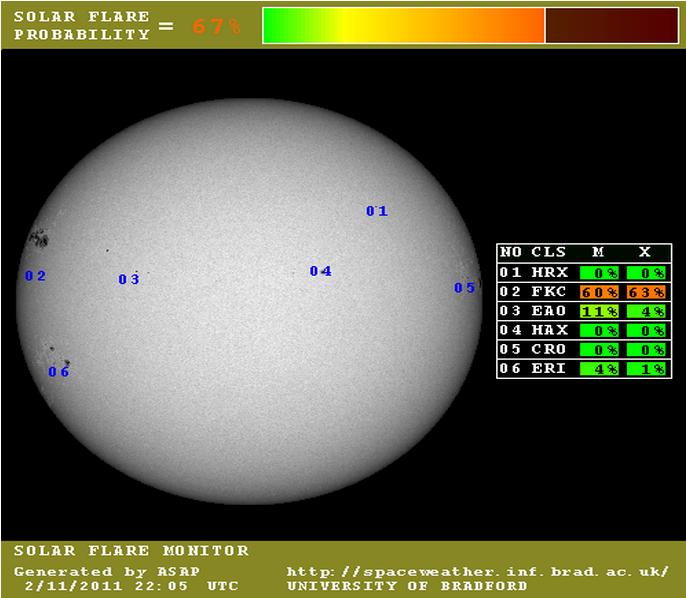
An update from solen website
I read different.
63% chance of X-flare

edit on 2-11-2011 by intergalactic fire because: (no reason given)
An update from solen website
Region 11339 has rotated fully into view revealing what is easily the largest area of any region during cycle 24. This FKC region spans about 17 degrees longitudinally with nearly continuous penumbral coverage (more than 2000 mills). There is a significant magnetic delta structure in the central southern part of the region and apparently a few smaller deltas elsewhere in the region. This region has the potential to release very large flares (class X10+).
edit on 2-11-2011 by intergalactic fire because: (no reason given)
Originally posted by Wrabbit2000
Oh brother.... This will be facing Earth on the 7th, Yu-55 makes it's closest Earth pass distance on the 8th and the FEMA/White House EAS test of all broadcast systems in the nation at once is at 2pm on the 9th. Then the Palesitnian vote and all kinds of other things on the 11th. Yee-haw. Talk about a coming week of days no one can call boring.
Who is bringing the popcorn? This will be a show to watch, indeed. Great catch and s/f. We should have known the Sun would add it's two cents during this brief time period too.
woohoo, the EAS at the same exact time YU55 is visible over our heads?
why are they doing it that way??
As I understand the data , the solar activity started to substantially increase in the last few weeks. I do not believe we will have a major event
from the new sunspots ,however it makes me wonder how next year December will look like.
reply to post by intergalactic fire
Thank you ..
I wait to see what kind activity groups have to post ..
Looks like group will be active when come in our direction, hope not ..
You see this picture from EIT before ??
sohowww.nascom.nasa.gov...
I never see nothing like this, some image deformations appear ..
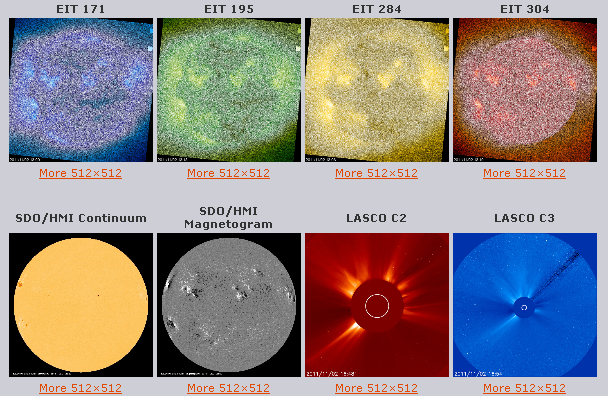
Peace ..
Thank you ..
I wait to see what kind activity groups have to post ..
Looks like group will be active when come in our direction, hope not ..
You see this picture from EIT before ??
sohowww.nascom.nasa.gov...
I never see nothing like this, some image deformations appear ..

Peace ..
edit on 2-11-2011 by Dalke07 because: (no reason given)
reply to post by Dalke07
Yes i saw it too on different sites.
Must be software related i guess
Looks like some static or something...
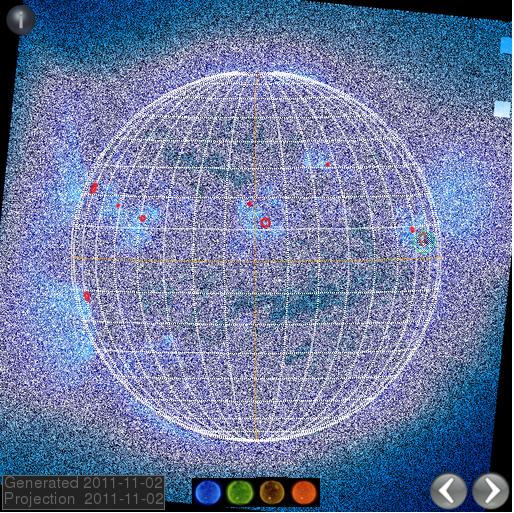
Yes i saw it too on different sites.
Must be software related i guess
Looks like some static or something...

edit on 2-11-2011 by intergalactic fire because: (no reason given)
reply to post by intergalactic fire
FLARE 0-24 hr 24-48 hr CLASS M 50 % 50 % CLASS X 05 % 05 %
Spaceweather
65% - I hope not. Just got this
at Spaceweather
reply to post by crazydaisy
Ok i see.
I don't use the data from spaceweather.com
I think they are sometimes a bit 'off' with their predictions.
I've been using the prediction tool i posted before for some time now and from my observations i must say they doing a good job at it
This is their website.
spaceweather.inf.brad.ac.uk...
You can download the tool for yourself and check out previous events and predictions by putting data into the software.
From their site
Ok i see.
I don't use the data from spaceweather.com
I think they are sometimes a bit 'off' with their predictions.
I've been using the prediction tool i posted before for some time now and from my observations i must say they doing a good job at it
This is their website.
spaceweather.inf.brad.ac.uk...
You can download the tool for yourself and check out previous events and predictions by putting data into the software.
edit on 2-11-2011 by
intergalactic fire because: (no reason given)
From their site
How accurate our predictions?
Accuracy of our predictions depends mostly on accuracy of each stage. We have a accuracy of ~95% on sunspot grouping, ~80% on sunspot group classification and ~90% on flare prediction depending on correct classification. In total this means we have a succes rate of ~70% on final flare prediction when we combine all stages
edit on 2-11-2011 by intergalactic fire because: (no reason given)
reply to post by intergalactic fire
I catch some interesting images, looks like Enterprise ..
Maybe you like them to0 ..


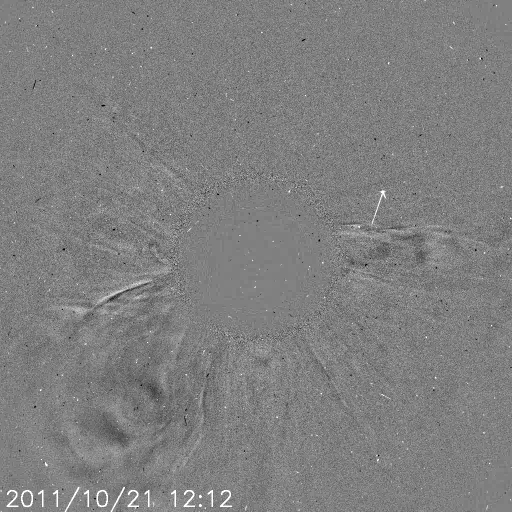
12 min later same position of that object, probably some error ..
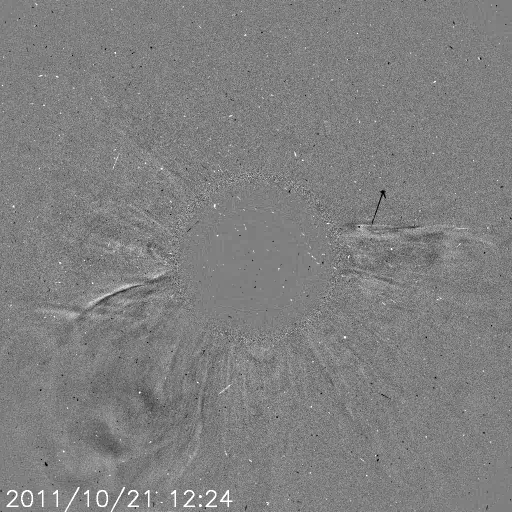
I catch some interesting images, looks like Enterprise ..
Maybe you like them to0 ..



12 min later same position of that object, probably some error ..

edit on 2-11-2011 by Dalke07 because: (no reason given)
Originally posted by crazydaisy
reply to post by Dalke07
Could you tell me what that is
on SOHO that looks like the
Enterprise?
Don't know what to say ..
Very Interesting for my is same position of that object, 12 min later ..
But can be some images delay or similar ..
edit on 2-11-2011 by Dalke07 because: (no reason given)
reply to post by crazydaisy
It has been seen many times before.
starviewer.wordpress.com...
Sorry i don't have english link
I found another one
sohogallery.50megs.com...
It has been seen many times before.
starviewer.wordpress.com...
Sorry i don't have english link
I found another one
sohogallery.50megs.com...
edit on 2-11-2011 by intergalactic fire because: (no reason given)
reply to post by crazydaisy
It has something to do with the CCD imaging. The sensitivity of pixels on the CCD can be disrupted by cosmic rays.
Which would make them more sensitive and produce overexposing of the pixels which makes up these spacecrafts.
According to Phil Plait.
www.disclose.tv...
It has something to do with the CCD imaging. The sensitivity of pixels on the CCD can be disrupted by cosmic rays.
Which would make them more sensitive and produce overexposing of the pixels which makes up these spacecrafts.
According to Phil Plait.
www.disclose.tv...
edit on 2-11-2011 by intergalactic fire because: (no reason given)
Thanks for the info regarding the image
on SOHO. Still interesting to see and
a bit of a mystery in a syfy sort of way.
on SOHO. Still interesting to see and
a bit of a mystery in a syfy sort of way.
SDO-movie of the M4.3-flare
Latest HMI from SDO
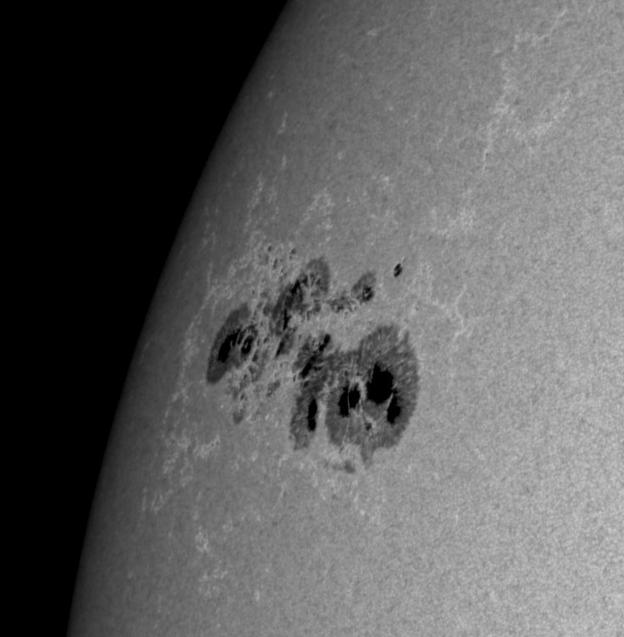
edit:
New M2.5 flare

Latest HMI from SDO

edit:
New M2.5 flare

edit on 3-11-2011 by intergalactic fire because: (no reason given)
new topics
-
Just spotted an unusual aircraft Melbourne Australia
Aliens and UFOs: 4 hours ago -
The truth lets admit it
Aliens and UFOs: 9 hours ago
top topics
-
Trump formally clinches Electoral College victory
2024 Elections: 17 hours ago, 18 flags -
Mass Shooting Towson, Maryland - 7 shot, 1 possibly dead
Social Issues and Civil Unrest: 12 hours ago, 5 flags -
The truth lets admit it
Aliens and UFOs: 9 hours ago, 4 flags -
Just spotted an unusual aircraft Melbourne Australia
Aliens and UFOs: 4 hours ago, 4 flags
active topics
-
Trump Cancel trip to New Jersey because of drones
Aliens and UFOs • 61 • : alldaylong -
The truth lets admit it
Aliens and UFOs • 16 • : Xtrozero -
Was Biden's Mass clemency and pardons one last cash grab?
US Political Madness • 5 • : mysterioustranger -
Post A Funny (T&C Friendly) Pic Part IV: The LOL awakens!
General Chit Chat • 7921 • : underpass61 -
School shooting in Madison Wi.
Social Issues and Civil Unrest • 67 • : BernnieJGato -
Just spotted an unusual aircraft Melbourne Australia
Aliens and UFOs • 2 • : ufoorbhunter -
The Mystery Drones and Government Lies --- Master Thread
Political Conspiracies • 123 • : ufoorbhunter -
Is this really what is going on?
General Conspiracies • 52 • : Lazy88 -
Mass Shooting Towson, Maryland - 7 shot, 1 possibly dead
Social Issues and Civil Unrest • 12 • : Athetos -
Russias War Against Religion in Ukraine
World War Three • 30 • : Oldcarpy2
